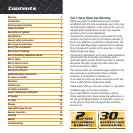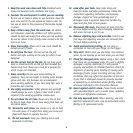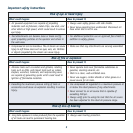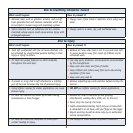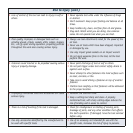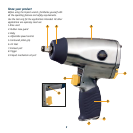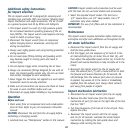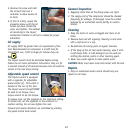
5
Important safety instructions
Risk of eye or head injury
What could happen How to prevent it
• Air powered equipment are capable of propelling
materials such as fasteners, metal chips, saw dust, and
other debris at high speed, which could result in serious
eye injury.
• Always wear safety glasses with side shields.
• Never leave operating tool unattended. Disconnect air
hose when tool is not in use.
• Tool attachments can become loose or break and fly
apart propelling particles at the operator and others in
the work area.
• For additional protection use an approved face shield in
addition to safety glasses.
• Compressed air can be hazardous. The air stream can cause
injury to soft tissue areas such as eyes, ears, etc. Particles
or objects propelled by the stream can cause injury.
• Make sure that any attachments are securely assembled.
Risk of fire or explosion
What could happen How to prevent it
• Abrasive tools such as sanders and grinders, rotating
tools such as drills, and impact tools such as nailers,
staplers, wrenches, hammers, and reciprocating saws
are capable of generating sparks which could result in
ignition of flammable materials.
• Never operate tools near flammable substances as
gasoline, cleaning solvents, etc.
• Work in a clean, well ventilated area.
• Never use oxygen, carbon dioxide or other gases as a
power source for air tools.
• Exceeding the maximum pressure rating of tools or
accessories could cause an explosion resulting in serious
injury.
• Use compressed air regulated to a maximum pressure at
or below the rated pressure of any attachments.
• Never connect to an air source that is capable of
exceeding 200 psi.
• Always verify prior to using the tool that the air source
has been adjusted to the rated air pressure range.
Risk of loss of hearing
What could happen How to prevent it
• Long term exposure to noise produced from the operation
of air tools can lead to permanent hearing loss.
• Always wear hearing protection.




